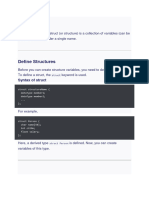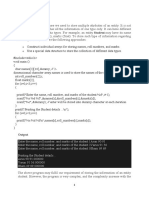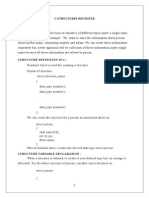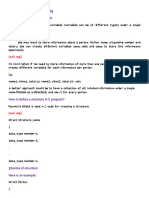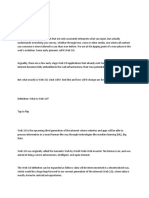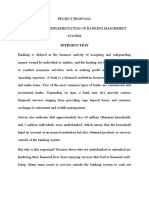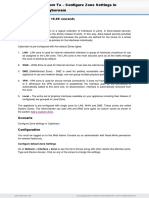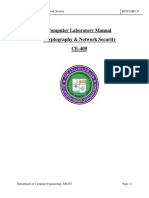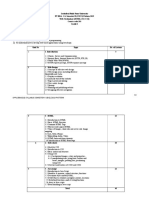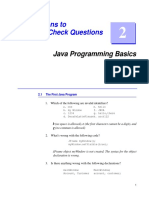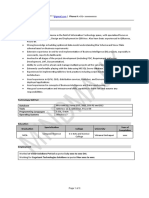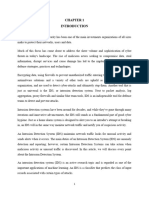100% found this document useful (1 vote)
151 views4 pagesC Structs and Pointers Guide
This document discusses using pointers with structs in C programming. It explains that pointers can be used to access members of a struct, and demonstrates doing so with an example. It also shows how to dynamically allocate memory for structs using malloc at runtime, since the number of structs needed may not be known at compile time. Memory is allocated for n structs based on user input, and the ptr pointer is used to access members of each struct.
Uploaded by
Harshit NaikCopyright
© © All Rights Reserved
We take content rights seriously. If you suspect this is your content, claim it here.
Available Formats
Download as PDF, TXT or read online on Scribd
100% found this document useful (1 vote)
151 views4 pagesC Structs and Pointers Guide
This document discusses using pointers with structs in C programming. It explains that pointers can be used to access members of a struct, and demonstrates doing so with an example. It also shows how to dynamically allocate memory for structs using malloc at runtime, since the number of structs needed may not be known at compile time. Memory is allocated for n structs based on user input, and the ptr pointer is used to access members of each struct.
Uploaded by
Harshit NaikCopyright
© © All Rights Reserved
We take content rights seriously. If you suspect this is your content, claim it here.
Available Formats
Download as PDF, TXT or read online on Scribd
/ 4



